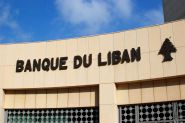
A question that keeps troubling people in Lebanon and elsewhere: should one sell their gold or buy even more?
For years, gold was seen as a safe haven, more a way to store wealth than a true investment. Holding physical gold has traditionally been considered a long-term hedge against inflation.
But the surge in the price of the yellow metal in 2025 has shaken that belief.
With a rise of more than sixty percent since the start of the year, gold can no longer be described as a quiet investment, as financiers once liked to say. The pullback at the end of October, after seven straight weeks of gains totaling 27 percent and a peak of 4,381 dollars on October 20, was welcomed by many analysts across the board. They saw it as a healthy breather, the kind of pause a market needs after such an explosive run.
Gold Eases as Fed Holds Firm
Gold prices eased on Tuesday after three members of the Federal Reserve’s Board of Governors indicated reluctance to support another rate cut next month, while the US dollar index continued trading near multi-month highs. Gold steadied around 3,941 dollars an ounce after swinging between gains and losses on Monday.
At the end of October, Federal Reserve Chair Jerome Powell warned investors not to expect a rate cut in December, in an effort to temper market expectations. Since then, traders have been assessing the risks facing gold prices.
China Puts the Brakes on Gold’s Rise
Alongside Jerome Powell’s cautious remarks on US interest-rate policy, Beijing has moved to tighten its control over the gold market. Since November 1, China has cut the VAT rebate for retailers selling physical gold outside approved vaults from 13 percent to 6 percent, ending a tax break that had been in place for two decades.
The move raises costs for dealers and jewelers and makes jewelry less attractive as a store of value. According to London-based ICBC Standard Bank, the measure may curb short-term demand but is part of Beijing’s broader push to strengthen yuan-denominated gold trade between Shanghai and Hong Kong.
A Thaw in US-China Relations
Amro Zakaria Abdo, co-founder of the Market Trader Academy, says the agreement reached between the United States and China on major trade issues has been the main factor weighing on gold prices. The deal revived investor optimism and reduced market uncertainty, triggering a sharp decline in safe-haven assets: gold fell below 4,000 dollars an ounce as markets absorbed the news.
Abdo expects gold’s retreat to continue, driven by easing geopolitical tensions and the renewed appeal of equities. He notes, however, that despite this correction, the yellow metal still records the largest annual gain in its history, with prices up 49 percent from last year, even after the recent pullback.
Signs of an Overbought Market
While technical indicators point to an overbought market, wealth advisors recommend maintaining a diversified portfolio with 20 to 25 percent in gold and gold ETFs. This guidance, of course, depends on the size of an individual’s savings. Advisors note that the fundamentals remain strong, supporting gold prices even if occasional pullbacks occur.
According to the World Gold Council, 75 percent of central banks—key players in gold purchases—plan to increase their reserves over the next three years to strengthen their currencies amid global debt pressures. The Council expects purchases in 2025 to total between 750 and 900 metric tons.
Gold at 3,700 Dollars
According to Nicholas Frappell, global head of institutional markets at Australian refinery ABC, “We are clearly in a correction phase, and this type of move doesn’t end in a few days. I wouldn’t be surprised to see gold drop to 3,700 dollars before testing new all-time highs.”
Many experts and analysts remain confident, however, about the long-term outlook for gold prices. Banks such as HSBC, Bank of America, and Société Générale are targeting 5,000 dollars an ounce next year.





Comments